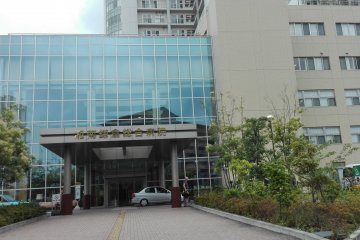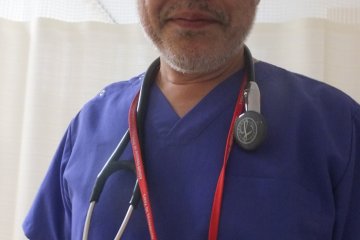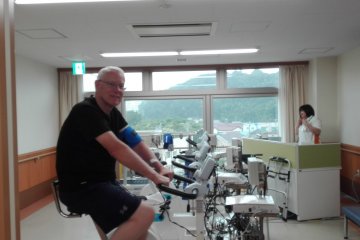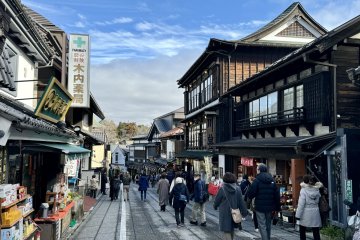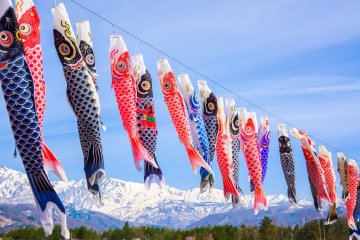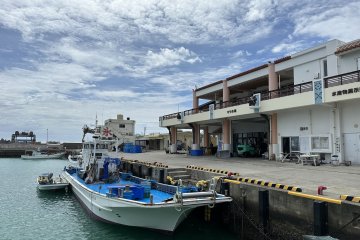If you are traveling to Japan you need to be prepared in case of a health emergency
Recently there was an article in Japan Today about a new list of foreign friendly Health Care facilities being prepared by the government. It was a positive article and when I read the comments section I was shocked at the multitude of negative comments. I did notice some were previous negative commentators on other Japan related articles and I image that with these people nothing will ever make them happy.
I would like to set the record straight. Many of my friends have lived in Japan for over 20 years and I am now completing 3. They have all experienced positive results from the system. While I am sure there are some problems as there are in every country in the world.
I am a healthy upper sixties male, I rarely get sick, but when I do I take quick action.
Back in January I started getting very dizzy and after a couple weeks with no relief I visited a local doctor who gave me some pills that controlled my symptoms. In February I had my third annual physical at Bluff Clinic in Yokohama. Dr. Akashi, who speaks fluent English had been warning me about my high cholesterol and wanted me to come back in August for a follow up.
I continued my long walks until the first week of June when I started having chest pains. During this time my pain became more frequent and I could no longer take long walks and even the shorts ones hurt like hell.
I made an appointment at Bluff Clinic on June 21st and described my new symptoms, and had an EKG, which showed some changes from February. Doctor Akashi immediately scheduled an appointment with a heart doctor for some tests.
Two days later I was at Shonan Kamakura General Hospital. This hospital serves many foreigners and they have interpreters on staff. My first reaction to the hospital was the warm and open reception area. I still do not know if the Warblers I heard singing were real from outside or part of a sound system. Either way it was a calming experience.
During my four hours at the hospital I went from department to department having various test, scans and blood work completed. All very organized by professional staff and I very rarely waited for the next test to begin. Finally, I met with Doctor Shigeru Saito, a highly recognized internationally known Intervention Cardiology specialist.
In 2015 Shonan Kamakura Hospital performed 4,869 cases of Coronary angiography and 1,025 cases of PCI (Percutaneous Coronary Intervention).
During our conference Dr. Saito displayed the results from the tests. It was easy to spot the blockage in one of my arteries and he recommended I have an immediate procedure implanting a stent. He was very thorough in his explanations and was the kind of person you would go and have a beer with after work. We scheduled the procedure for the next Tuesday.
Over the weekend I took it easy but the pains in my chest continued to intensify.
I arrived at 11 am on Tuesday and was immediately taken to my room and the process began with blood work, IV insertion, EKG and by 1 pm. I was in the operating room. I was greeted by a group of people all smiling and the Doctor explained he had some students who would watch the procedure. There was an English-speaking nurse in attendance. I was given a local anesthetic and was awake during the entire procedure. While the device was in my system Doctor Saito found an additional clogging and partial collapsed artery, Prior to inserting the Stent he fixed everything and when finished he sat me up showed me a screen and pointed to were the stent was inserted. I was then placed in a recovery and finally taken back to my room. Later in the afternoon Doctor Saito came to visit me and said since I was so healthy there was no need to stay two days and I could be released tomorrow after meeting with a physical therapist and a dietician. By noon the next day I was on my way home.
During my physical therapy I met Margaret Ells, a lady on holiday form New Zealand. She was visiting her daughter who owns the Mojo Coffee cafes in Tokyo. They were visiting Kamakura when Mrs. Ells with out warning collapsed struggling to breath after returning from dinner in their hotel. She was quickly brought to Shonan Kamakura Hospital by ambulance and was diagnosed with a Pulmonary Embolism, at which point her doctor administered a new drug that completely dissolved a clot that otherwise would have caused death. Miwa and I both had a chance to talk with her and she could not stop talking about how effective our health care system was in Japan. Her experience mirrored mine with an efficient, thorough, and friendly staff. After 2 weeks in the hospital she was being released to continue her holiday.
Mrs Ells said, “I can't imagine receiving better treatment anywhere else in the world. Despite the language barrier those nurses and doctors that could speak some English did their best to communicate with me so I understood what was happening at the time. In the ward the nurses used an iPad with a translation app on it that allowed them to talk into it in Japanese and then it would translate and repeat it to me in English and vice versa”.
I cannot go into the cost as the health care system premiums are based on income levels and I also carry supplemental insurance. I will say that even if you paid the maximum amount of the service provided, it is still almost one third the cost for the same procedure in the U.S.. In 2015 Blue Cross Blue Shield stated the average costs nationwide for PCI (Percutaneous Coronary Intervention in the U.S. was $27,144 not including hospital and other medical services. (See the BCBS web page)
To sum it up over the past three years I have utilized Japan’s health care system and have had nothing but positive experiences with a very organized, efficient, and friendly service.
Oh, another benefit to this procedure is that when they discovered the additional clot and fixed it my dizziness completely disappeared.
When I travel out of country I always carry travel insurance in case of an emergency and I highly recommend you who are traveling to Japan do the same, but do not fear getting sick in our country as you will be well taken care of.




